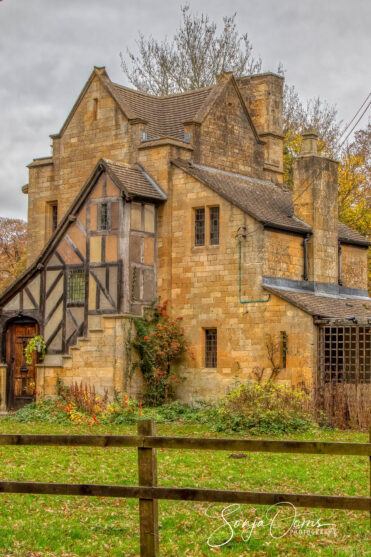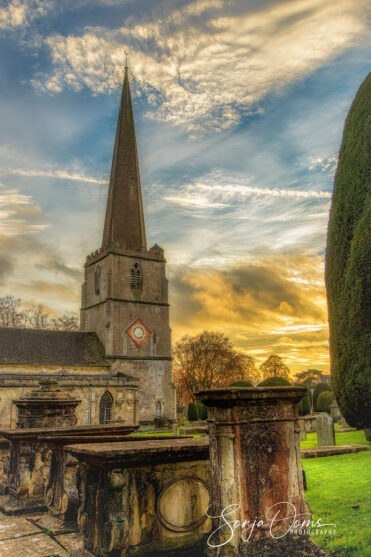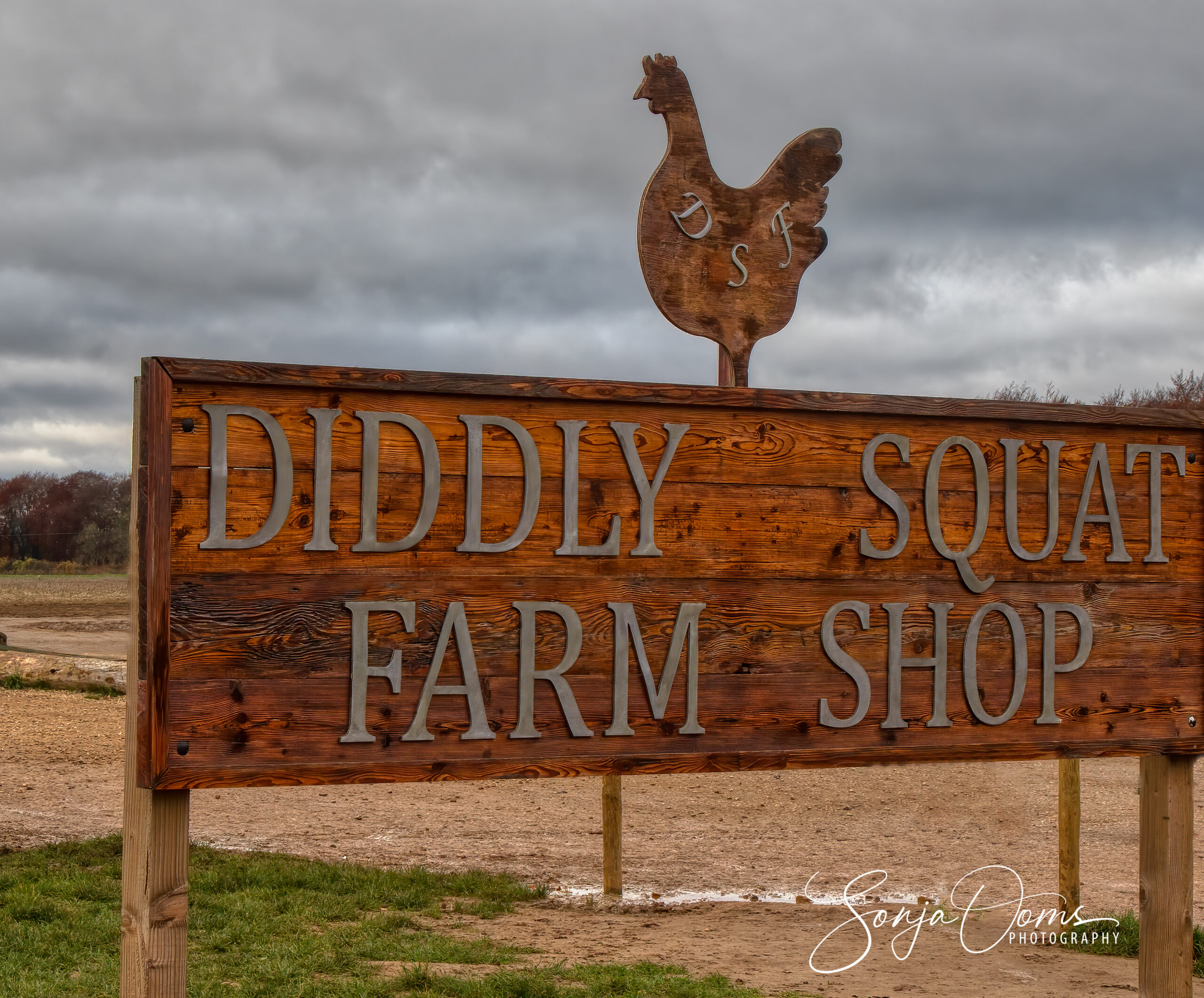Featured image: view of Castle Combe from the river

After all the other stunningly beautiful UK places we visited, we wanted to cross another one off our bucket list before winter set in: The Cotswolds.
Yes, well, what is so special about the Cotswolds? To find that out we went on one of our mini-trips in the UK and came back with a ton of beautiful pictures and memories. Follow us on our photographic expedition around this beautiful UK region, where it’s mostly all about picturesque villages. Traditional, historic, charming and quaint are words that come to mind.
They are the most important attraction of the Cotswolds, once a thriving place for the wool industry, now stuck in time. All’s wool that ends wool!
Very little has changed in some of these villages and towns for 300 years with the beautifully restored and maintained buildings dating back to the 14th,15th & 16th century. One of the most attractive features being the honey-coloured limestone – the beautiful patina gained through the centuries of ageing.

And on top of that those villages are situated in England and Wales’ largest Area of Outstanding Natural Beauty (AONB) covering 6 counties and around 800 sq miles (2.000 sq km): Gloucestershire, Oxfordshire, South Warwickshire, Worcestershire, Wiltshire and Bath & Northeast Somerset.
The larger villages are very popular with British & foreign tourists alike. So it’s best, as usual, to try and visit off season and certainly avoid school holidays (I want dogs to be allowed in more places and kids under 15 to not be).

Autumn with its unique palette of colors is really very nice, provided you are lucky with the weather. Contrary to popular belief, Brits don’t talk about the weather all the time. Since they are not the most socially confident people and have around 120 days of rainfall a year, there isn’t much sense for them to indulge in chit-chat, like “Isn’t it rainy?” “Yes, just like yesterday and the day before, and … .”
And we were lucky also that there were still C-19 international travel restrictions in place, so very few tourist from the continent.
Combine the beauty of historic movie settings and the historical significance of an ancient civilisation and you’ve got the Cotswolds. Stunning landscapes and rolling hills, filled with farm animals (actually, in the Cotswolds, like everywhere else in the UK, there seem to be sheep everywhere), ancient stone buildings, and lively pubs and restaurants.
I think the Cotswolds make for the perfect short holiday, you can easily hop over from London and get a good dose of the time warped villages.
Painswick church at sunset
There is ample opportunity to enjoy the countryside, take a hike, or just enjoy some pup-grub in one of the many traditional pubs. In general in the UK you have the freedom to walk nearly everywhere, and you’ll see signs that direct you on the many public footpaths.
Google “10 best places to visit in the Cotswolds” or “the 20 most beautiful villages of the Cotswolds” and you’re likely to get 100+ hits … For us, difficult to decide which village was the most beautiful.
In the 4 days we were there, we had a look at many of the nice villages, and as we’re fans of quiet, laid-back places with as few people around as possible, the following made our favorites list. So here we go.
Castle Combe – Movie location.
With no new houses built here since the 1600s, Castle Combe has a decidedly fairy-tale feel – honey-hued houses, a faceless 13th-century clock, a picture-perfect bridge over a babbling river. Little wonder then, that it’s long been used as a location for plenty of movies and TV shows, from Bridgerton and The Wolf Man, to Stardust and War Horse. It also featured in the original Dr Doolittle film.
The Slaughters – pastoral perfection
If forced to pick the prettiest Cotswolds villages, The Slaughters (Lower and Upper) might just nab the number one slot for us.
The name might conjure images of a bloody historic battle, but Slaughter is actually derived from the Old English word for a muddy place – a “slough”. No mud now but a perfect place to walk and enjoy the surroundings.
Stanton – thatched fabulousness
A very close number two. I don’t think a village could be more perfect. Stanton was sleepy with narrow streets framed by impossibly attractive thatched stone cottages.
This beautiful village has retained a sense of authenticity, the tea rooms and shops that unfortunately dominate other villages are lacking here. Probably the reason why Stanton seems to be attracting less tourists than most of the other villages.
Tea-rooms and shops of which there is certainly no shortage in the following villages. Which were nice and certainly worth a visit, but with cars parked everywhere, spoiling the view, lacking the authenticity and picturesque quality of Castle Combe or Stanton and the Slaughters.
Bourton-on-the-Water – Venice of the Cotswolds
Nicknamed “Venice of the Cotswolds”, that says it all. The name alone attracts plenty of the tourist coaches. The traditional cottages that sit on the riverfront have nearly all been turned into antiques shops, cafés and pubs. Not really our thing. But worth a look anyway.
Stow-on-the-Wold – all about shopping
The town has been an important trading center since Roman times and still is now. Shopping not really being our thing, why did we go there?
Because this is where you’ll find the pub claiming to be England’s oldest inn, The Porch House, founded in 947 AD, with its cozy open fires and low ceilings. And most importantly St Edward’s Church. Where you can find this photographic marvel which seems to be an image straight out of a Tolkien novel. This is the fairy-tale, north door of St Edward’s Church, flanked by two huge yew trees.
Chipping Campden – listed Market Hall, built in 1627
With over 250 listed buildings, Chipping Campden is bursting with history.
Purton Ships Graveyard – Last resting place
And then a friend of ours told us to have a look at the Purton Ships Graveyard. Between 1909 & 1970 a large number of purposely abandoned boats and ships were beached on this stretch of the River Severn with the aim of reinforcing the river bank. One of those unusual and extraordinary places we love to explore.
And does it stop there? No, there’s Snowshill, Bibury, Bredon, Mickleton, Kingham, Asthall, Broadway, Blockley, Burford, … Which we didn’t have time to visit. But right, you guessed it, we’ll have to go back!

And anyone who recognizes this billboard is a big fan of the very politically incorrect farmer and Top Gear presenter Jeremy Clarkson and probably also a white, able-bodied, heterosexual, privileged petrol-head like me. The “Diddly Squat Farm” from the immensely popular Amazon TV series, Clarkson’s Farm, is also in the Cotswolds, near Chipping Norton.

Dove Lodge
Perhaps a word also about where we stayed. We were lucky enough to be allowed to stay in a stunning little house, Dove Lodge in Painswick. Thank you Peter and Judy to let us stay in your cottage. Look it up on AirBnb, it’s one of the best places we ever stayed in.

The Butchers Arms
And for a tasty dinner in a lovely local, traditional, free house pub, served by friendly staff: don’t hesitate to stop at the Butchers Arms in the nearby village of Sheepscombe. Don’t miss the carved outdoor sign of a butcher sipping a pint of beer with a pig tied to his leg. The Latin on the sign translates as “Thou Hast Put All Things Under Man’s Feet, All Sheep and Oxen” and the arms are of the “Worshipful Company of Butchers” an organization of butchers existing since 975.

